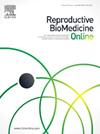Renewing ovarian stimulation
IF 3.7
2区 医学
Q1 OBSTETRICS & GYNECOLOGY
引用次数: 0
Abstract
Conventional ovarian stimulation protocols were designed for fresh embryo transfer. They start in the early follicular phase, i.e. the infamous day 2-3, gonadotrophin-releasing hormone analogues are used to prevent premature ovulation, and the stimulation is harnessed due to the fear of ovarian hyperstimulation syndrome and the decreasing chance of a live birth following a fresh transfer. The advent of vitrification allows a confident cancellation of fresh transfers and effective oocyte/embryo freezing for future use. Today, many stimulation cycles are not intended to involve a fresh embryo transfer. Ovarian stimulation for freeze-all cycles can be vastly different from conventional stimulation. The quantitative and qualitative oocyte yield seems independent of the starting day, and the early or late follicular or luteal phase may have distinct advantages for different needs. A variety of pituitary suppression protocols including oral progestins or not using exogenous suppression at all can be employed without compromising oocyte quantity and quality. Stimulation can cautiously aim for the patient's maximal potential since the agonist trigger without a fresh transfer curbs the risk of ovarian hyperstimulation syndrome. Patients can be even stimulated multiple times in a menstrual cycle when deemed beneficial. Ovarian stimulation is more patient and physician friendly than ever.
更新卵巢刺激
传统的卵巢刺激方案是为新鲜胚胎移植而设计的。由于担心卵巢过度刺激综合征和新鲜胚胎移植后活产的几率降低,因此这些方案都是在卵泡早期阶段,即臭名昭著的第 2-3 天开始,使用促性腺激素释放激素类似物来防止过早排卵,并对刺激进行控制。玻璃化技术的出现使人们可以放心地取消新鲜移植,并有效地冷冻卵母细胞/胚胎以备将来使用。如今,许多促排卵周期都不打算进行新鲜胚胎移植。冻存周期的卵巢刺激与传统刺激有很大不同。卵母细胞产量的定量和定性似乎与起始日无关,卵泡期或黄体期的早期或晚期对于不同的需求可能有不同的优势。可以采用各种垂体抑制方案,包括口服孕激素或完全不使用外源性抑制,而不会影响卵母细胞的数量和质量。刺激可以谨慎地瞄准患者的最大潜能,因为激动剂触发而不进行新的移植可以降低卵巢过度刺激综合征的风险。在认为有益的情况下,患者甚至可以在一个月经周期内接受多次刺激。卵巢刺激疗法比以往任何时候都更适合患者和医生。
本文章由计算机程序翻译,如有差异,请以英文原文为准。
求助全文
约1分钟内获得全文
求助全文
来源期刊

Reproductive biomedicine online
医学-妇产科学
CiteScore
7.20
自引率
7.50%
发文量
391
审稿时长
50 days
期刊介绍:
Reproductive BioMedicine Online covers the formation, growth and differentiation of the human embryo. It is intended to bring to public attention new research on biological and clinical research on human reproduction and the human embryo including relevant studies on animals. It is published by a group of scientists and clinicians working in these fields of study. Its audience comprises researchers, clinicians, practitioners, academics and patients.
Context:
The period of human embryonic growth covered is between the formation of the primordial germ cells in the fetus until mid-pregnancy. High quality research on lower animals is included if it helps to clarify the human situation. Studies progressing to birth and later are published if they have a direct bearing on events in the earlier stages of pregnancy.
 求助内容:
求助内容: 应助结果提醒方式:
应助结果提醒方式:


